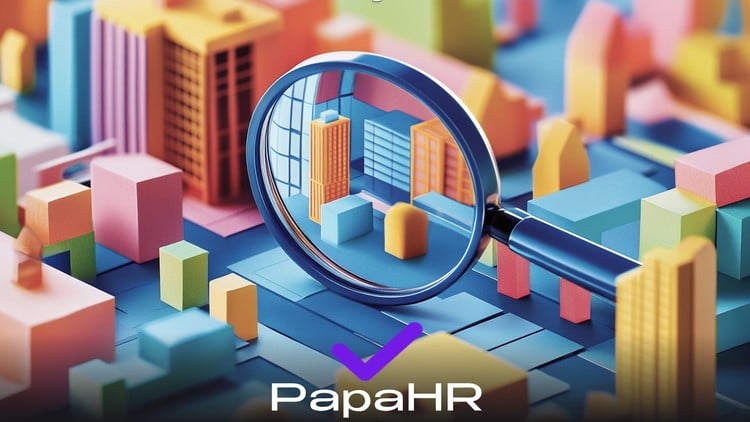
Process Design | BPMN | Process Mapping | HR Workflows | Business Process Documentation | Workflow Optimization
⏱️ Length: 3.7 total hours
⭐ 4.64/5 rating
👥 7,684 students
🔄 October 2025 update
Add-On Information:
Note➛ Make sure your 𝐔𝐝𝐞𝐦𝐲 cart has only this course you're going to enroll it now, Remove all other courses from the 𝐔𝐝𝐞𝐦𝐲 cart before Enrolling!
- Course Overview
- This comprehensive course, “Business Process Management (BPM) Design Map Workflows [EN]”, is engineered to equip participants with the strategic and practical skills necessary to meticulously design, document, and optimize business processes. Moving beyond theoretical concepts, it emphasizes the tangible creation of workflow maps using industry-standard methodologies like BPMN, thereby enabling organizations to achieve enhanced efficiency, clarity, and control over their operations. The course delves into the entire lifecycle of process management, from initial identification and analysis to implementation and continuous improvement, ensuring that participants can drive meaningful change within their respective fields.
- The curriculum is structured to provide a robust understanding of why and how process documentation is critical for organizational success. It guides learners through the selection of the most impactful processes for initial mapping, ensuring that efforts are focused where they will yield the greatest return. Participants will gain hands-on experience with various modeling techniques and software, allowing them to translate complex operational steps into clear, actionable visual representations.
- A significant portion of the course is dedicated to the analytical aspect of process management. Learners will develop the acumen to critically evaluate existing workflows, identify bottlenecks, and devise strategies for optimization. This includes understanding how to implement new or revised processes effectively and establishing mechanisms for ongoing monitoring and refinement.
- The course also addresses the crucial human element of process implementation. It covers the formation of effective project teams and the strategic communication of process design initiatives to senior leadership, fostering buy-in and support. The practical application is reinforced through real-world HR process examples, providing concrete models for participants to adapt and implement.
- Ultimately, the goal is to empower individuals and organizations to embed a culture of structured, efficient, and continually improving business processes, leading to increased consistency, quality, and competitive advantage.
- Requirements / Prerequisites
- A foundational understanding of general business operations and common organizational structures.
- Familiarity with basic computer literacy and the ability to navigate software applications.
- An interest in improving operational efficiency and problem-solving within a business context.
- No prior experience with BPMN or process mapping software is strictly required, as the course covers these from an introductory level.
- Skills Covered / Tools Used
- Strategic Process Identification: Learn to prioritize which business processes offer the most significant opportunities for improvement and documentation.
- Visual Workflow Design: Master the creation of clear and unambiguous process maps using methodologies like BPMN and standard flowcharting techniques.
- Process Analysis & Evaluation: Develop skills in dissecting existing processes to identify inefficiencies, redundancies, and areas for enhancement.
- Software Proficiency: Gain practical experience with process modeling software, utilizing its features for efficient documentation and analysis.
- Project Management Fundamentals: Understand the stages of a process description project, from initial planning and team formation to rollout and post-implementation monitoring.
- Team Collaboration & Stakeholder Management: Learn how to build effective project teams and present process initiatives persuasively to upper management.
- HR Process Modeling: Apply process design principles to specific, common HR functions such as onboarding, recruitment, and performance management.
- Integration & Operationalization: Understand how to embed documented processes into daily work routines to ensure consistency and quality.
- Change Management Principles: Grasp the concepts of fostering a culture of structured and optimized processes within an organization.
- Tools: Various process modeling software (specific examples may be introduced within the course), presentation software, and potentially collaboration tools.
- Benefits / Outcomes
- Enhanced Operational Clarity: Achieve a transparent and well-defined view of how work gets done across the organization.
- Increased Efficiency & Productivity: Identify and eliminate bottlenecks, reducing waste and speeding up operational cycles.
- Improved Quality & Consistency: Standardize processes to ensure reliable and high-quality outputs, reducing errors.
- Better Decision-Making: Data-driven insights from well-documented processes enable more informed strategic and operational decisions.
- Streamlined Onboarding & Training: Facilitate faster and more effective integration of new employees through clear process documentation.
- Foundation for Automation: Provide a clear blueprint for potential automation initiatives by clearly defining existing workflows.
- Empowered Project Teams: Equip individuals with the skills to lead and execute process improvement projects successfully.
- Stronger Governance & Compliance: Establish clear audit trails and ensure adherence to regulatory requirements.
- Agility & Adaptability: Create a framework that allows for easier adaptation to changing market demands and business needs.
- Fostered Culture of Continuous Improvement: Cultivate an environment where process optimization is an ongoing and valued activity.
- PROS
- Practical, Hands-On Approach: Focuses on applying methodologies and tools to real-world scenarios.
- Industry-Standard Methodologies: Teaches BPMN, a globally recognized language for process modeling.
- Comprehensive Scope: Covers the entire BPM lifecycle from design to monitoring.
- HR Process Focus: Provides immediately applicable examples for a critical business function.
- High Student Engagement: Demonstrated by a strong student count and high rating, indicating effective delivery.
- Regular Updates: Ensures the content remains relevant and incorporates current best practices.
- CONS
- Software Dependency: While software is a tool, learners might need to procure or access specific process modeling software, potentially incurring additional costs or setup time outside the course itself.
Learning Tracks: English,Business,Operations
Found It Free? Share It Fast!